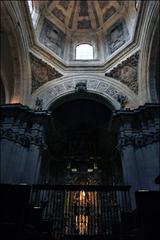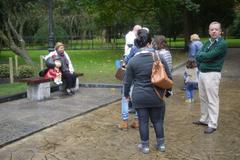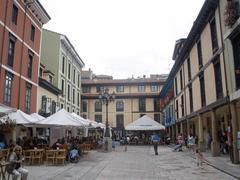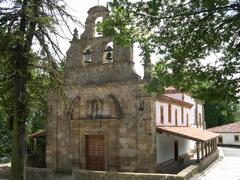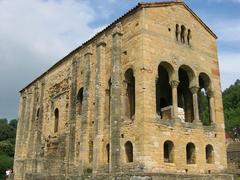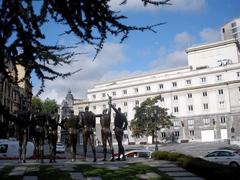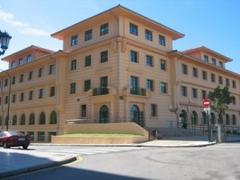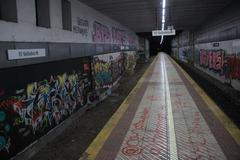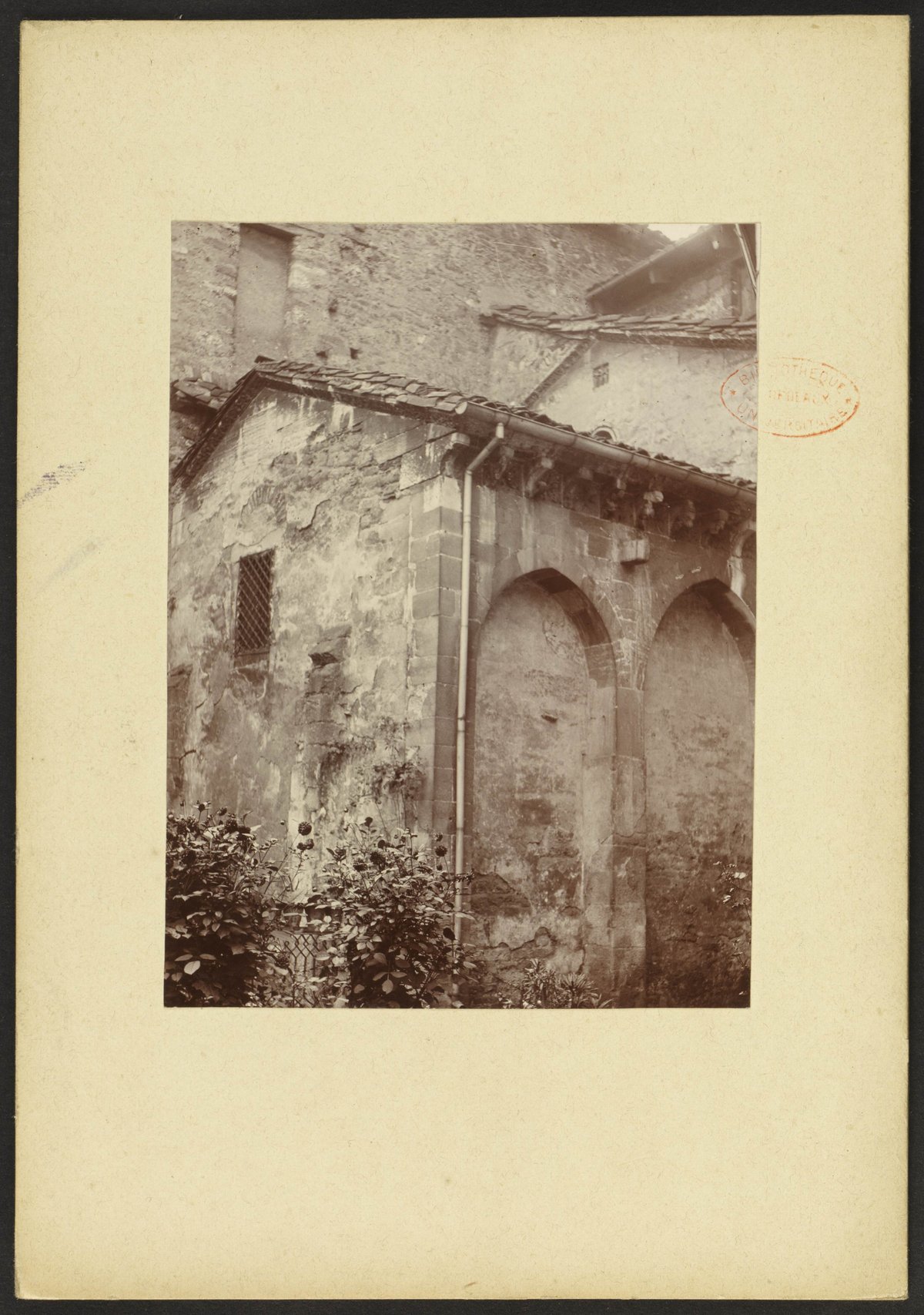
Cámara Santa Oviedo: Comprehensive Visiting Guide, Tickets, and Historical Insights
Date: 14/06/2025
Introduction
The Cámara Santa of Oviedo, nestled within the Cathedral of San Salvador, stands as a monument of immense religious, historical, and architectural significance in northern Spain. Constructed in the early 9th century under King Alfonso II “the Chaste,” this pre-Romanesque chapel originally functioned as a royal oratory and a secure treasury for Christian relics. Its role during a turbulent era, marked by the consolidation of the Christian Kingdom of Asturias amidst the expansion of the Muslim emirate of Córdoba, cemented its place as a focal point for faith and culture.
As a vital stop on the Camino de Santiago pilgrimage, the Cámara Santa has inspired reverence among pilgrims and visitors for over a millennium. Its treasures—most notably the Cross of the Angels, the Victory Cross, and the Holy Shroud of Oviedo—embody the spiritual and political identity of Asturias. Today, declared a UNESCO World Heritage Site as part of the “Monuments of Oviedo and the Kingdom of the Asturias,” the Cámara Santa is accessible to the public, offering regular visiting hours, guided tours, and proximity to other notable Oviedo sites. For updated details, consult the official Cathedral of Oviedo website and the Asturian Pre-Romanesque portal. (prerromanicoasturias.es, catedraldeoviedo.com, trek.zone)
Table of Contents
- Historical Background
- Architectural and Artistic Features
- Notable Relics
- Visiting the Cámara Santa: Hours, Tickets, and Accessibility
- Guided Tours and Visitor Experience
- Special Events and Pilgrimage Significance
- Nearby Attractions
- Frequently Asked Questions (FAQ)
- Conclusion and Practical Tips
- References
Historical Background
Origins and Development
The Cámara Santa, or Holy Chamber, was built in the early 9th century during the reign of King Alfonso II, intended both as a palatine chapel for the Asturian monarchy and as a secure treasury for relics brought from Toledo after the fall of the Visigothic kingdom (prerromanicoasturias.es; spottinghistory.com). Its construction coincided with the rise of Oviedo as the Asturian capital and the city’s growing prominence as a Christian stronghold.
Over centuries, the Cámara Santa became a major pilgrimage destination, especially as part of the Camino de Santiago. The saying, “He who goes to Santiago and not to San Salvador, visits the servant and not the Lord,” underscores its importance along the pilgrimage route (planetware.com).
Restoration and UNESCO Recognition
In October 1934, the chamber suffered considerable damage during the Asturian miners’ uprising. Restoration between 1939 and 1942, guided by archival documentation, preserved its historical authenticity (prerromanicoasturias.es). In 1998, UNESCO recognized the Cámara Santa as part of the “Monuments of Oviedo and the Kingdom of the Asturias” World Heritage Site, highlighting its architectural and religious significance (turismoasturias.es; worldheritagesites.net).
Architectural and Artistic Features
Structure and Layout
The Cámara Santa is a two-story building attached to the south side of the Cathedral of Oviedo. The lower level, the Crypt of St. Leocadia, is a small barrel-vaulted chamber dedicated to early Christian martyrs. The upper level, the Chapel of St. Michael, features a rectangular plan with a barrel-vaulted ceiling, blind arcades, and sculpted capitals that illustrate the transition from pre-Romanesque to Romanesque styles (spottinghistory.com).
Decorative Elements
The chamber is renowned for its Romanesque reliefs and sculptures, especially those added in the 12th century. These include biblical scenes, saints, and a striking apostolate of twelve apostles. The artistry reflects both the religious devotion and the political aspirations of medieval Asturias (academia.edu).
Construction Techniques
Built primarily from limestone and sandstone, the Cámara Santa uses advanced barrel vaulting for both crypt and chapel, providing security and solemnity. Its modest dimensions reinforce its function as a treasury and intimate chapel rather than a large congregational space (prerromanicoasturias.es).
Integration with the Cathedral Complex
Though the main cathedral is Gothic, the Cámara Santa’s pre-Romanesque style stands out. Its proximity to the Tower of San Miguel emphasizes its dual religious and defensive roles (spain.info).
Notable Relics
The Cámara Santa is celebrated for its collection of revered Christian relics:
- Cross of the Angels (Cruz de los Ángeles): Donated by King Alfonso II in 808, this gold and jeweled cross is a symbol of Oviedo and Asturias (catedraldeoviedo.com).
- Victory Cross (Cruz de la Victoria): Associated with the Asturian victory at Covadonga and featured on the Asturian coat of arms.
- Agate Box (Caja de las Ágatas): A 10th-century gold and agate casket of exceptional craftsmanship.
- Holy Ark (Arca Santa): A reliquary containing sacred relics, including the Holy Shroud of Oviedo, believed to have covered Christ’s face (liveandinvestoverseas.com).
These treasures are displayed with great reverence and are central to the chamber’s spiritual significance.
Visiting the Cámara Santa: Hours, Tickets, and Accessibility
Location and Access
The Cámara Santa is part of the Cathedral of San Salvador, located at Plaza Alfonso II El Casto S/N, 33003 Oviedo, Asturias, Spain (catedraldeoviedo.com). The cathedral sits in Oviedo’s historic core, easily accessible on foot.
Visiting Hours
- Monday to Saturday: 10:00–14:00 and 16:00–19:00
- Sundays and Religious Holidays: Closed to visitors
- Last Admission: One hour before closing (visitoviedo.info)
Hours may vary on major feast days or during special events. Always check the official website before your visit.
Tickets
- Admission: Includes access to the Cathedral, Cámara Santa, Museo de la Iglesia, and cloister.
- Pricing: 5–8 euros, with discounts for students, seniors, and groups.
- Booking: Purchase at the entrance or in advance online (catedraldeoviedo.com). Advance booking is recommended during peak periods.
Accessibility
- The Cámara Santa is not wheelchair accessible due to steep stairs. The main cathedral and cloister offer partial accessibility via a side entrance.
- For specific needs or assistance, contact the cathedral at +34 985 219 642 or [email protected].
Guided Tours and Visitor Experience
- Audio Guides: The official cathedral app provides tours in seven languages, including sign language.
- Guided Tours: Accredited guides are available and can be booked through the cathedral website.
- Interpretation: Interpretive panels and multimedia displays enhance visitor understanding. Interactive maps and virtual tours are available online.
During your visit, expect a contemplative atmosphere, subdued lighting, and a deep sense of history. Modest attire is required, and silence is encouraged.
Special Events and Pilgrimage Significance
- Santo Sudario (Holy Shroud) Display: The original shroud is exhibited only three times a year—Good Friday, September 14, and September 21.
- Religious Ceremonies: The chamber is central to liturgical celebrations, particularly during the Jubilee of the Holy Cross.
- Pilgrimage: As part of the Camino Primitivo, Oviedo is a key starting point for the Camino de Santiago. The tradition and spiritual atmosphere make the Cámara Santa especially significant for pilgrims (audiala.com).
Nearby Attractions
- Museo de Bellas Artes de Asturias (museobbaa.com)
- Santa María del Naranco (santamariadelnaranco.es)
- El Fontán Market (touristsecrets.com)
- Plaza del Fontán and the Archaeological Museum of Asturias
- Numerous cafés, shops, and amenities within walking distance
Frequently Asked Questions (FAQ)
Q: Is the Cámara Santa accessible for wheelchair users?
A: No, the chamber is only accessible by stairs. The main cathedral offers partial accessibility.
Q: When can I see the Santo Sudario?
A: The Holy Shroud is displayed on Good Friday, September 14, and September 21. A replica is on view at other times.
Q: Is photography allowed?
A: Photography is generally restricted, especially during ceremonies and relic displays. Always follow posted signs.
Q: Are guided tours available in English?
A: Yes, guided tours and audio guides are offered in multiple languages.
Q: Can I buy tickets at the door?
A: Yes, but online advance booking is recommended, especially during busy periods.
Conclusion and Practical Tips
The Cámara Santa encapsulates centuries of faith, artistry, and political history. As a UNESCO World Heritage Site, it offers visitors an unparalleled glimpse into the spiritual and cultural fabric of Asturias. For the best experience:
- Book tickets in advance via the official website.
- Dress modestly and maintain a respectful silence inside.
- Explore related historical sites in Oviedo for a fuller appreciation of the region’s heritage.
- Use the official cathedral app or book a guided tour for deeper insights.
By visiting the Cámara Santa, you participate in a living tradition that bridges the medieval past and the present, making it an essential destination for anyone interested in Spain’s religious and cultural legacy.
References
- Cámara Santa of the Cathedral of San Salvador of Oviedo, 2023, prerromanicoasturias.es (prerromanicoasturias.es)
- Cámara Santa Oviedo Visiting Hours, Tickets, and Historical Significance, 2024, trek.zone (trek.zone)
- Visiting the Cámara Santa Oviedo: Hours, Tickets, and Historical Insights, 2024, worldheritagesites.net (worldheritagesites.net)
- Cámara Santa Visiting Hours, Tickets, and Visitor Experience in Oviedo, 2024, catedraldeoviedo.com (catedraldeoviedo.com)
- Monuments of Oviedo and the Kingdom of the Asturias, UNESCO World Heritage, 1998, turismoasturias.es (turismoasturias.es)
- Oviedo Cathedral Official Website, 2024, catedraldeoviedo.com (catedraldeoviedo.com)
- Discover Oviedo, Spain’s Historical Sites, 2024, spain.info (spain.info)


